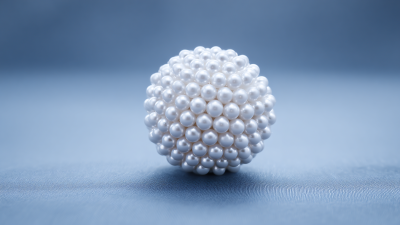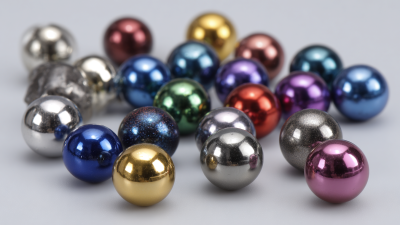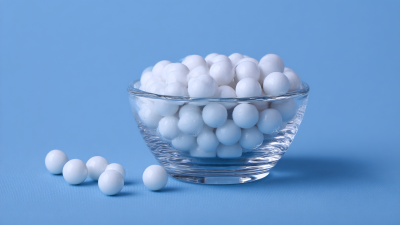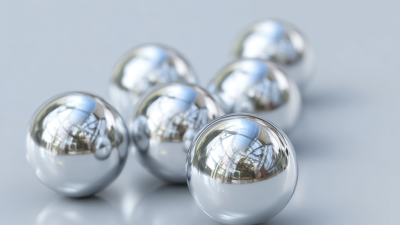In recent years, the demand for advanced materials in various industries has led to an increased interest in high-performance ceramic products. Among these, the ZrO2 Ceramic Ball 65% stands out for its exceptional properties, making it a vital component in modern manufacturing and engineering applications. This innovative material is renowned for its outstanding durability, wear resistance, and thermal stability, which enhance its performance in challenging environments.
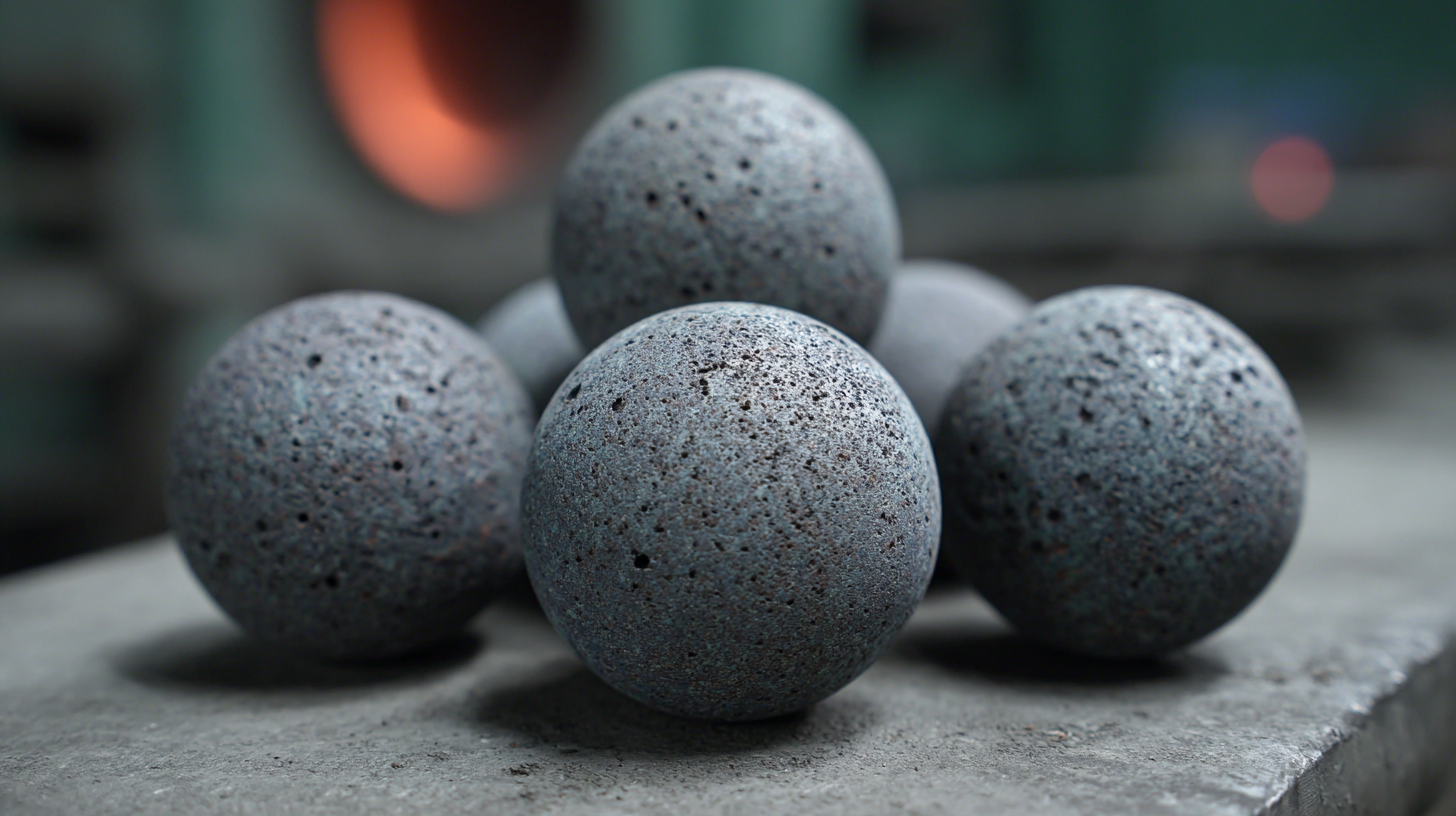
The integration of ZrO2 Ceramic Ball 65% into industrial processes has revolutionized sectors such as automotive, aerospace, and electronics by significantly improving efficiency and product longevity. This article explores the numerous benefits and versatile applications of ZrO2 Ceramic Ball 65%, offering valuable insights and practical tips for industries looking to leverage its advantages in their operations.
65% ZrO2 ceramic balls have gained significant attention in various industrial applications due to their remarkable wear resistance properties. These ceramic balls are engineered to withstand harsh conditions and high levels of friction, making them ideal for use in bearings, valves, and other components that are subject to constant wear. The enhanced durability provided by these ceramic balls translates into longer equipment life, reduced downtime, and significant cost savings for manufacturers.
Tips: When selecting ZrO2 ceramic balls for your application, consider the specific operating conditions such as temperature, load, and environment. Ensuring compatibility with the intended use will maximize performance and longevity. Additionally, conducting regular inspections can help in identifying any signs of wear early, allowing for timely replacements and avoiding unexpected failures.
Furthermore, the unique properties of 65% ZrO2 also contribute to its lightweight and corrosion-resistant characteristics. These attributes make it an excellent choice for industries such as aerospace, automotive, and food processing, where both performance and hygiene are critical. Integrating these ceramic balls into machinery not only enhances operational efficiency but also minimizes maintenance requirements, fostering a more sustainable approach in modern manufacturing.
The chart above illustrates the key benefits of 65% ZrO2 ceramic balls in industrial settings, highlighting their exceptional wear resistance and other significant properties that enhance their suitability for various applications.
The utilization of 65% ZrO2 ceramic balls in aerospace engineering and manufacturing has revolutionized various aspects of the industry. These ceramic balls, known for their exceptional hardness and toughness, are particularly effective in high-stress applications such as bearings and valves. Their ability to withstand extreme temperatures and corrosive environments makes them ideal for aerospace components, where reliability is paramount. In turbine engines, for example, the lightweight and durable properties of these ceramic balls help in reducing friction and improving efficiency, ultimately contributing to fuel savings and enhanced performance.
In addition, 65% ZrO2 ceramic balls are integral to precision manufacturing processes within the aerospace sector. Their spherical shape and uniformity facilitate smoother movement in machinery, enhancing the precision of assembly lines. This consistency not only reduces wear and tear on equipment but also ensures high quality in the final products. As aerospace engineering continues to push the boundaries of performance and efficiency, the adoption of advanced materials like ZrO2 ceramic balls demonstrates a significant leap toward achieving these goals, ensuring the future of aviation remains robust and sustainable.
| Application Area | Key Benefits | Typical Uses | Material Properties |
|---|---|---|---|
| Aerospace Engineering | High wear resistance, Lightweight | Bearings, Engine components | Density: 6.06 g/cm³, Hardness: 1300 HV |
| Manufacturing | Thermal stability, Corrosion resistance | Cutting tools, Molds | Young's Modulus: 210 GPa, Fracture toughness: 6 MPa·m1/2 |
| Medical Devices | Biocompatibility, Sterilizable | Implants, Prosthetics | Chemical composition: 65% ZrO2, 35% Y2O3 |
| Energy Sector | High strength at elevated temperatures | Gas turbines, Heat exchangers | Thermal conductivity: 3 W/mK |
The use of 65% ZrO2 ceramic balls in various industrial applications presents significant cost efficiency and longevity benefits. These ceramic balls are known for their exceptional wear resistance and durability, which reduces the frequency of replacements and maintenance. In industries where high precision is crucial, such as in manufacturing and aerospace, the longevity of ZrO2 ceramic balls translates to lower operational costs over time. Companies can minimize downtime associated with equipment failure, allowing for smoother production processes and ultimately leading to increased productivity.
Moreover, the cost efficiency of 65% ZrO2 ceramic balls extends beyond their lifespan. The lightweight nature of these balls contributes to energy savings during operations, especially in applications such as grinding and milling. The reduction in energy consumption not only lowers expenses but also aligns with sustainability initiatives that many modern industries are striving to adopt. By investing in these high-performance ceramic balls, businesses can achieve a more sustainable operational framework while enjoying enhanced efficiency and reduced long-term costs.
In recent years, the adoption of 65% ZrO2 ceramic balls has revolutionized various modern industries, particularly in comparison to traditional materials. The remarkable properties of zirconia, such as its high wear resistance, low thermal conductivity, and superior mechanical strength, make it a prime candidate for applications that demand durability and reliability. Industries, especially in biomedical fields, are increasingly recognizing the benefits of these advanced ceramic materials, which provide enhanced performance and longevity over conventional options.

At events like the recent conference held by the American Academy of Orthopaedic Surgeons, companies are showcasing innovative solutions that highlight the advantages of 65% ZrO2 material. This progressive shift from traditional materials to ceramic alternatives signifies a commitment to improving product performance, especially in areas like orthopedic implants and prosthetics. The comparative analysis demonstrates that while traditional materials often face challenges like wear and bio-compatibility, the superior characteristics of zirconia-based ceramics pave the way for more efficient and safer industrial applications. Such advancements underscore the growing trend toward incorporating cutting-edge materials in product development across various sectors.
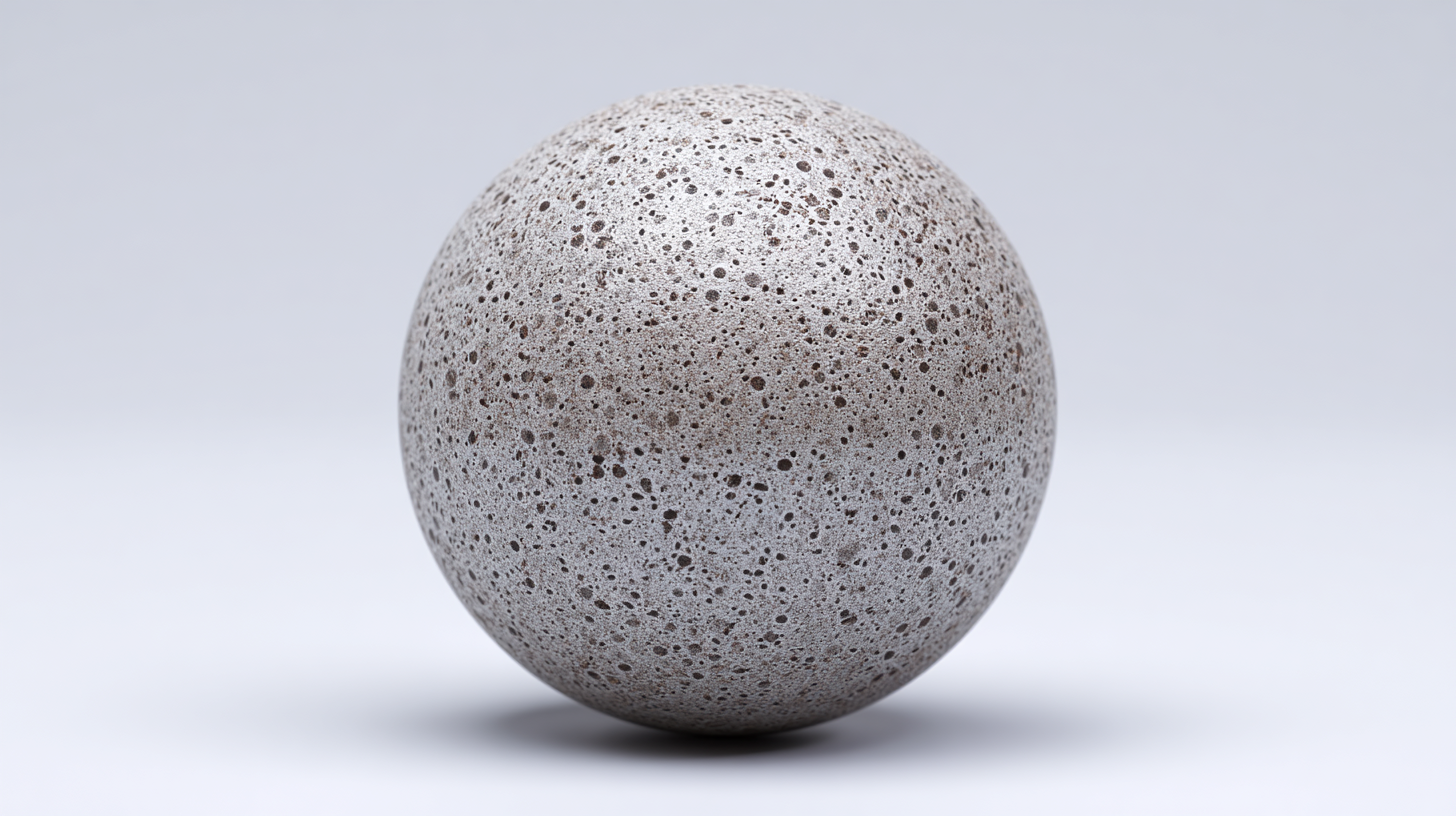 The increasing adoption of 65% ZrO2 ceramic balls is indicative of the broader trends in technological advancements across various industries. As manufacturing processes evolve, the push for materials that can withstand extreme conditions without compromising performance has become paramount. The durability, high wear resistance, and excellent thermal stability of 65% ZrO2 ceramic balls position them as a preferred choice for applications in industries such as aerospace, automotive, and electronics. Moreover, their low density contributes to energy-efficient designs in advanced machinery, making them highly desirable components.
The increasing adoption of 65% ZrO2 ceramic balls is indicative of the broader trends in technological advancements across various industries. As manufacturing processes evolve, the push for materials that can withstand extreme conditions without compromising performance has become paramount. The durability, high wear resistance, and excellent thermal stability of 65% ZrO2 ceramic balls position them as a preferred choice for applications in industries such as aerospace, automotive, and electronics. Moreover, their low density contributes to energy-efficient designs in advanced machinery, making them highly desirable components.
Furthermore, the trend toward automation and precision engineering is enhancing the role of 65% ZrO2 ceramic balls. With the rise of robotics and automated systems, these ceramic balls are increasingly utilized in linear motion systems, bearings, and ball screws, where precision and reliability are crucial. This trend suggests a shift towards incorporating advanced materials that not only promise performance improvements but also align with sustainability goals. The capability of 65% ZrO2 ceramic balls to reduce friction and increase operational efficiency reflects a forward-thinking approach to material selection, reinforcing their significance in future technological developments.
